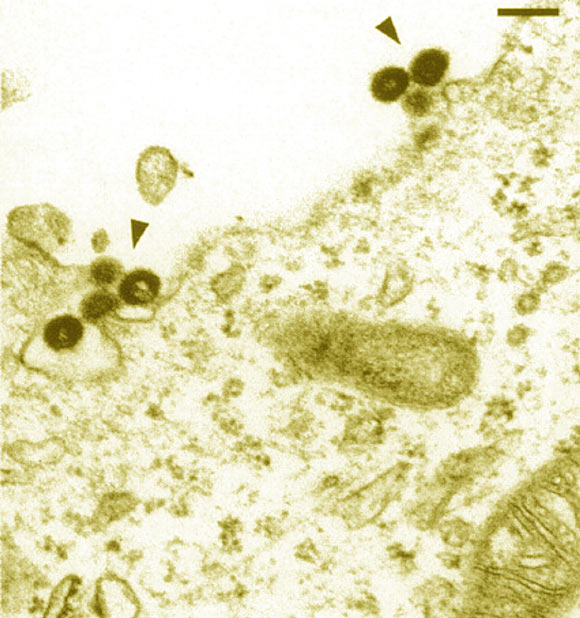Biologists have found in the human DNA a full-fledged ancient retrovirus

Genetics from Tufts University and the University of Michigan Medical School in studying the genomes of 2,500 people found nineteen previously unnoticed DNA fragments left in humans by retroviruses. And in 50 of the genomes studied, the entire retrovirus was found. This is the second virus found in the human genome, completely preserved there.
A number of viruses have the ability to invade the human genome and become its own genes. First of all, this refers to the so-called retroviruses, so named for their lifestyle. The original genome of these viruses is RNA. But, once in the cell, the virus builds a DNA copy on its RNA. After this, a DNA copy of the virus is inserted into the genome of the cell.
')
A DNA copy of the virus inserted into the human cell genome is called a provirus. Then, viral RNA is synthesized on the provirus, on the basis of which new viral particles are formed. This is the behavior of, for example, a well-known retrovirus, called the human immunodeficiency virus (HIV), when it infects blood cells.
Usually this problem remains the problem of individual infected cells. Then viruses and proviruses die along with the cells in which they have worked. But unfortunately, this does not always happen. It is extremely rare that germ-line cells are infected — in these cases, pro-viruses form, but the organism survives and the introduced pro-virus becomes an inherited element of the human genome. So a provirus appears in the cell, changing the genome much more than is possible with “normal” evolutionary variability.
During the sequencing of the human and other mammalian genomes, it turned out that they contain a very large number of repetitive elements that resemble infectious viruses. Repetitive elements that can encode 2–3 proteins and surrounded on two sides by another special repeats - called long terminal repeats (DKP) - were assigned to a family called retrotransposons.
In humans, they constitute a fairly significant part - about 8% of the genome. Such elements are often called endogenous retroviruses, in contrast to typical retroviruses that exist outside of organisms in nature (they are called exogenous retroviruses).
For millions of years of evolution, the parts of the viruses that have been integrated into the genome have also undergone changes, and at the moment mostly defective parts or very short fragments remain. Mutations accumulated during the evolution of endogenous retroviruses do not allow them to form new infectious virus particles.
According to estimates, such proviruses appeared in the human genome from 10 to 50 million years ago as a result of infection of the germ cells of our predecessors and have since been inherited, like all other elements of the genome.
More surprisingly, on the X chromosome, scientists have found the intact genome of the virus they named Xq21. It is unclear whether it can be reproduced, but apparently, its presence may affect its carrier.
“The virus found looks like it can create its own copy that will infect organisms - and if this is true, it would be great! Then we could study the viral epidemic that developed many years ago, ”virologist John Coffin shares his joy . “The study provides important information needed to understand the joint evolution of humans and retroviruses in relatively recent times.”
Source: https://habr.com/ru/post/392151/
All Articles